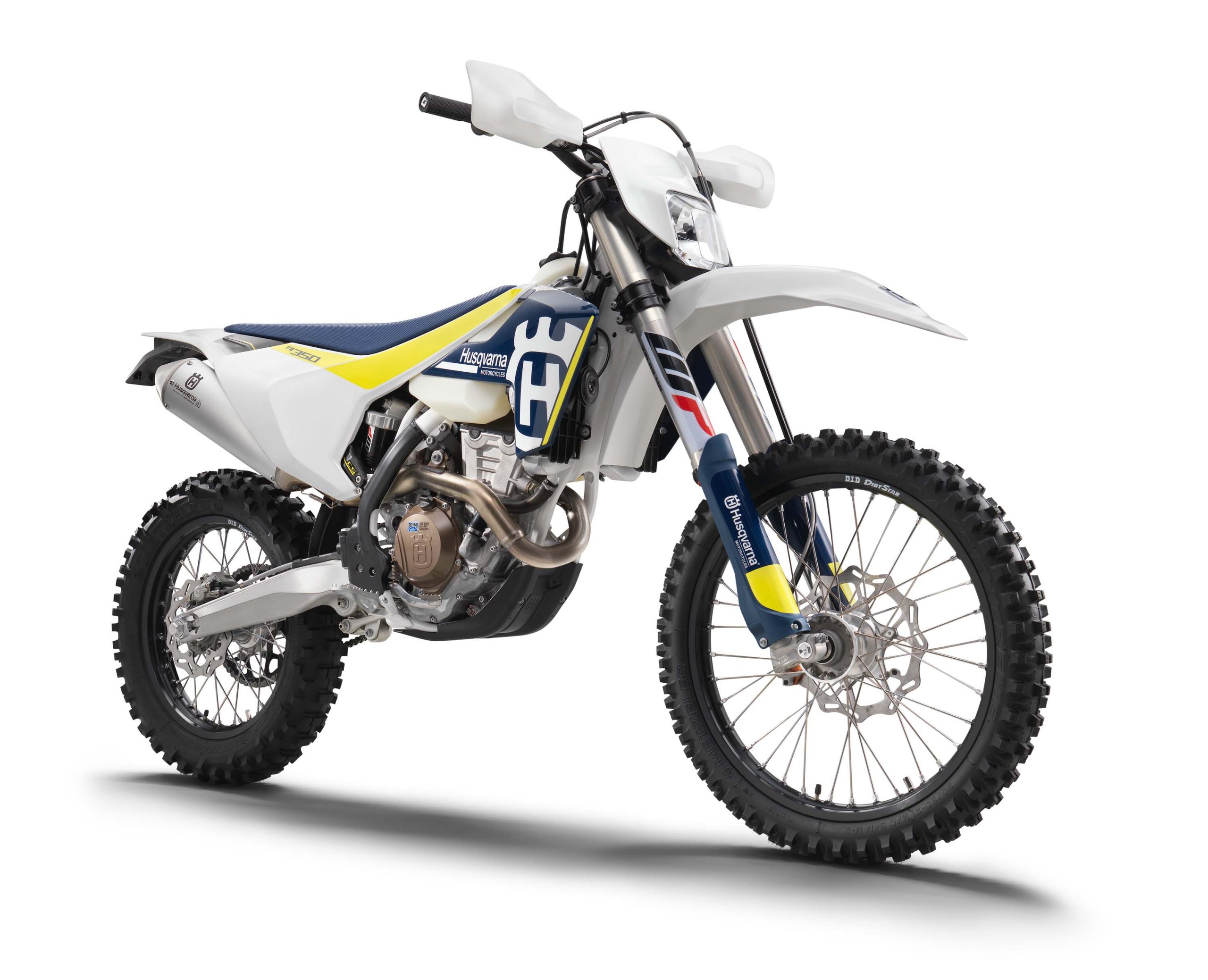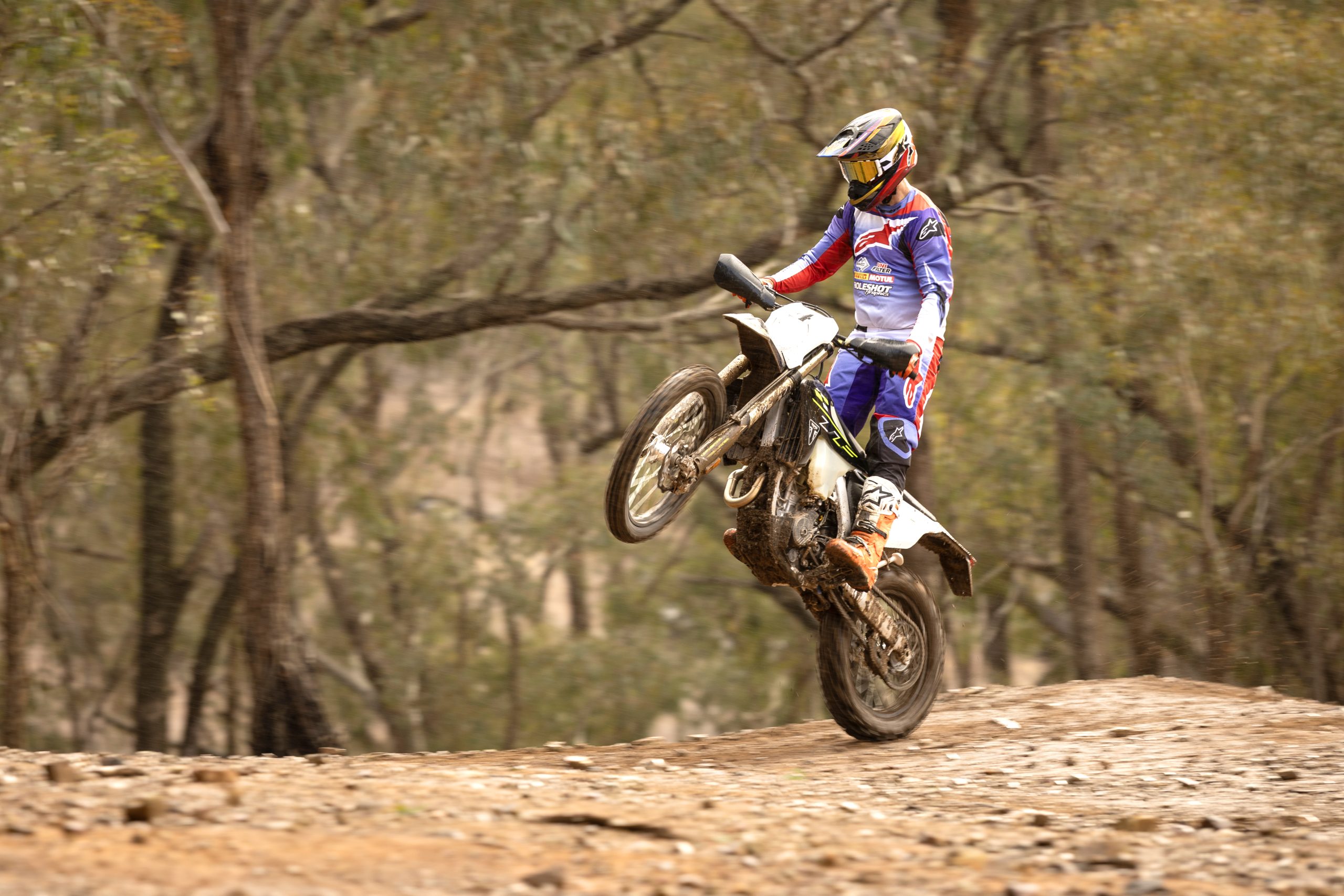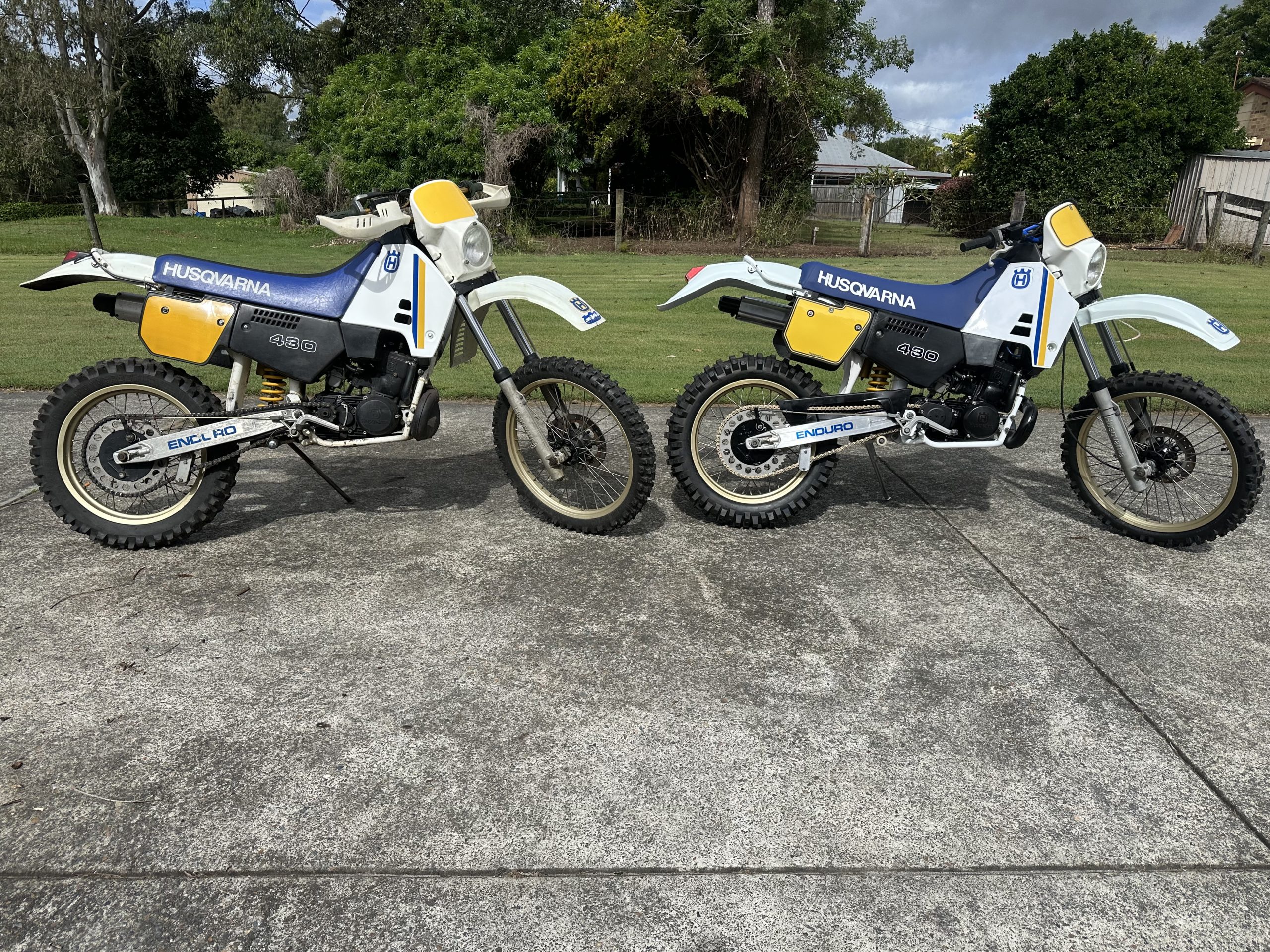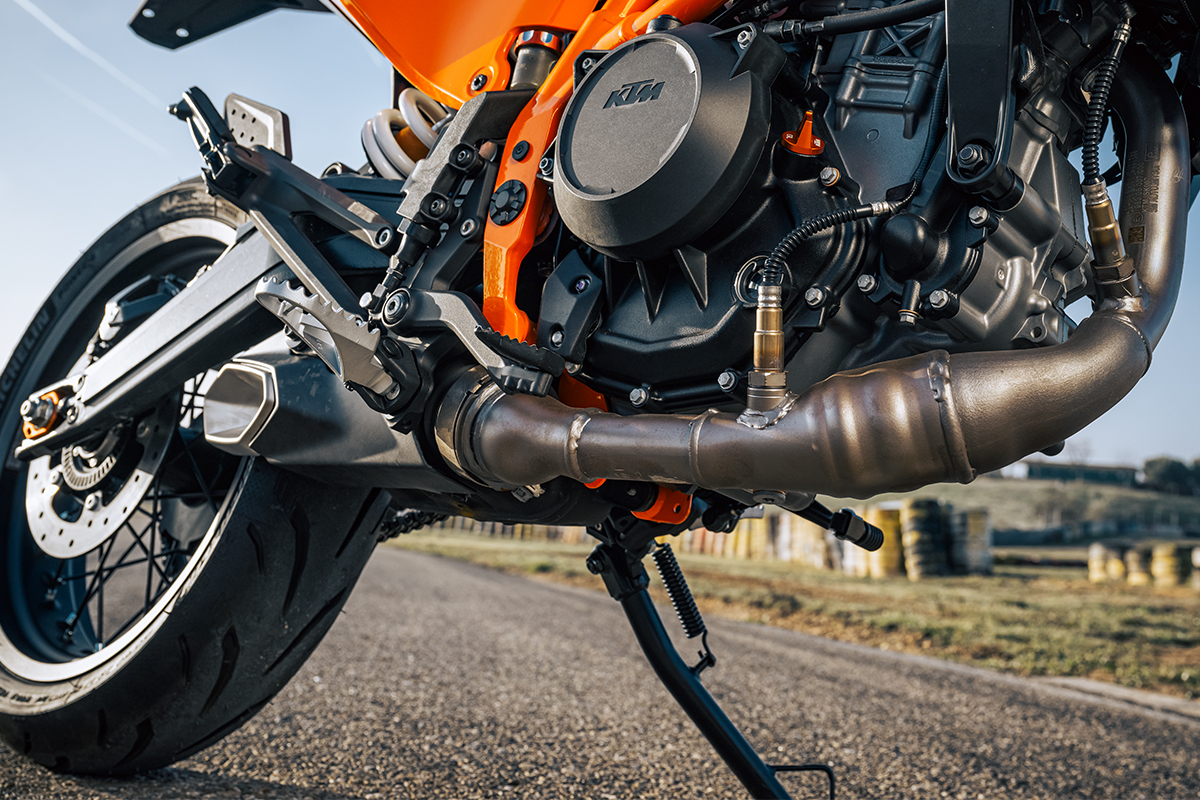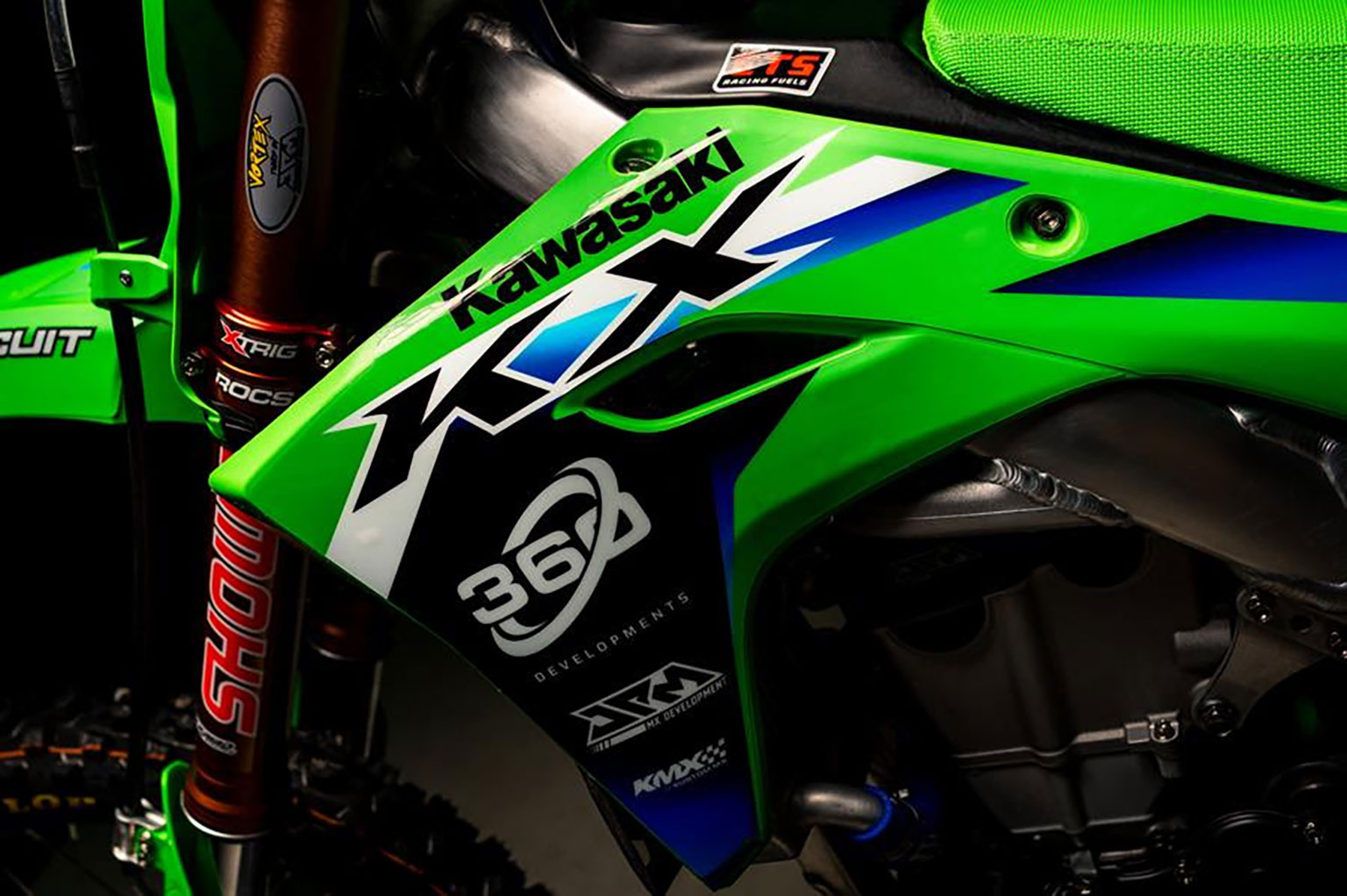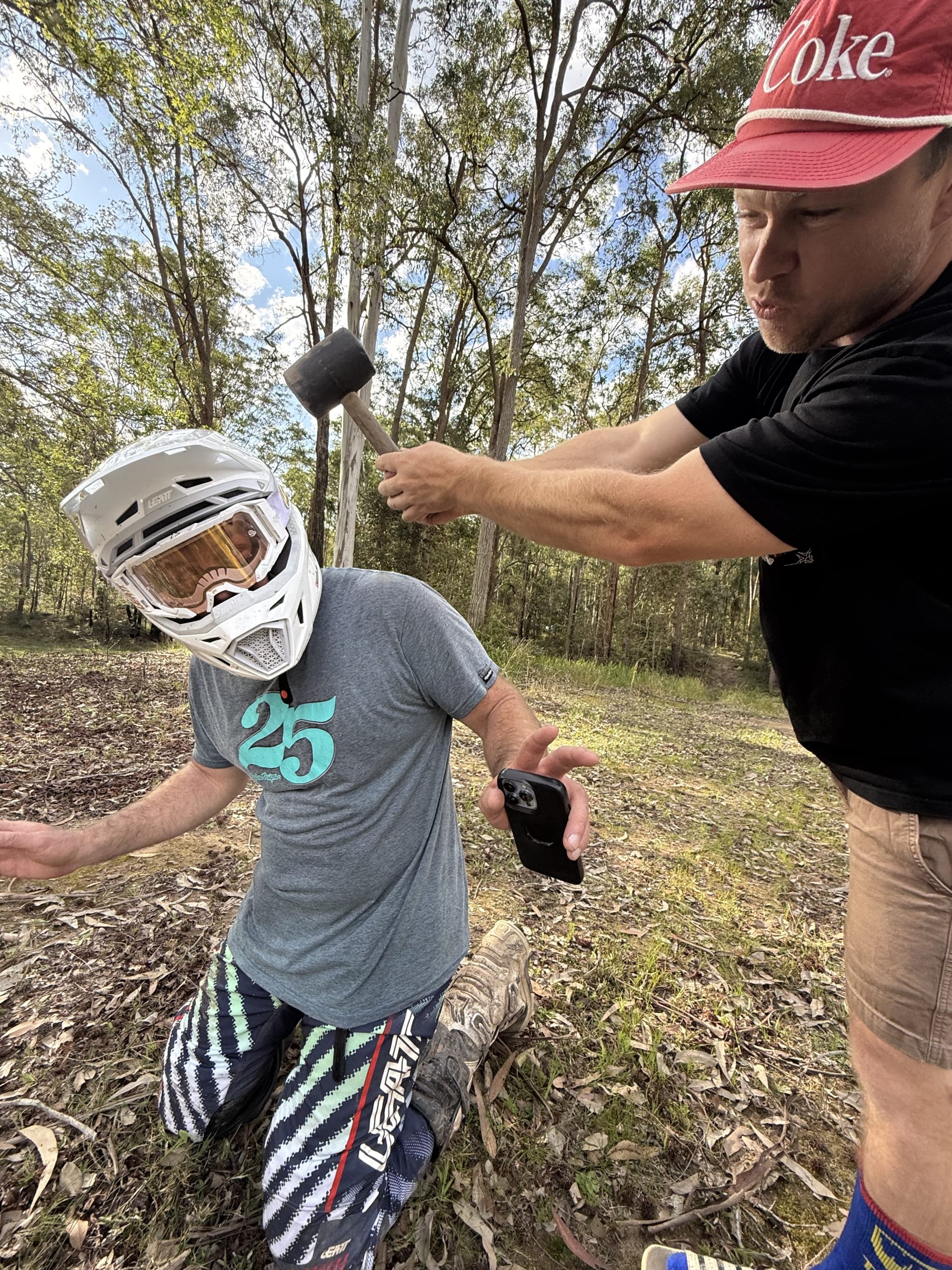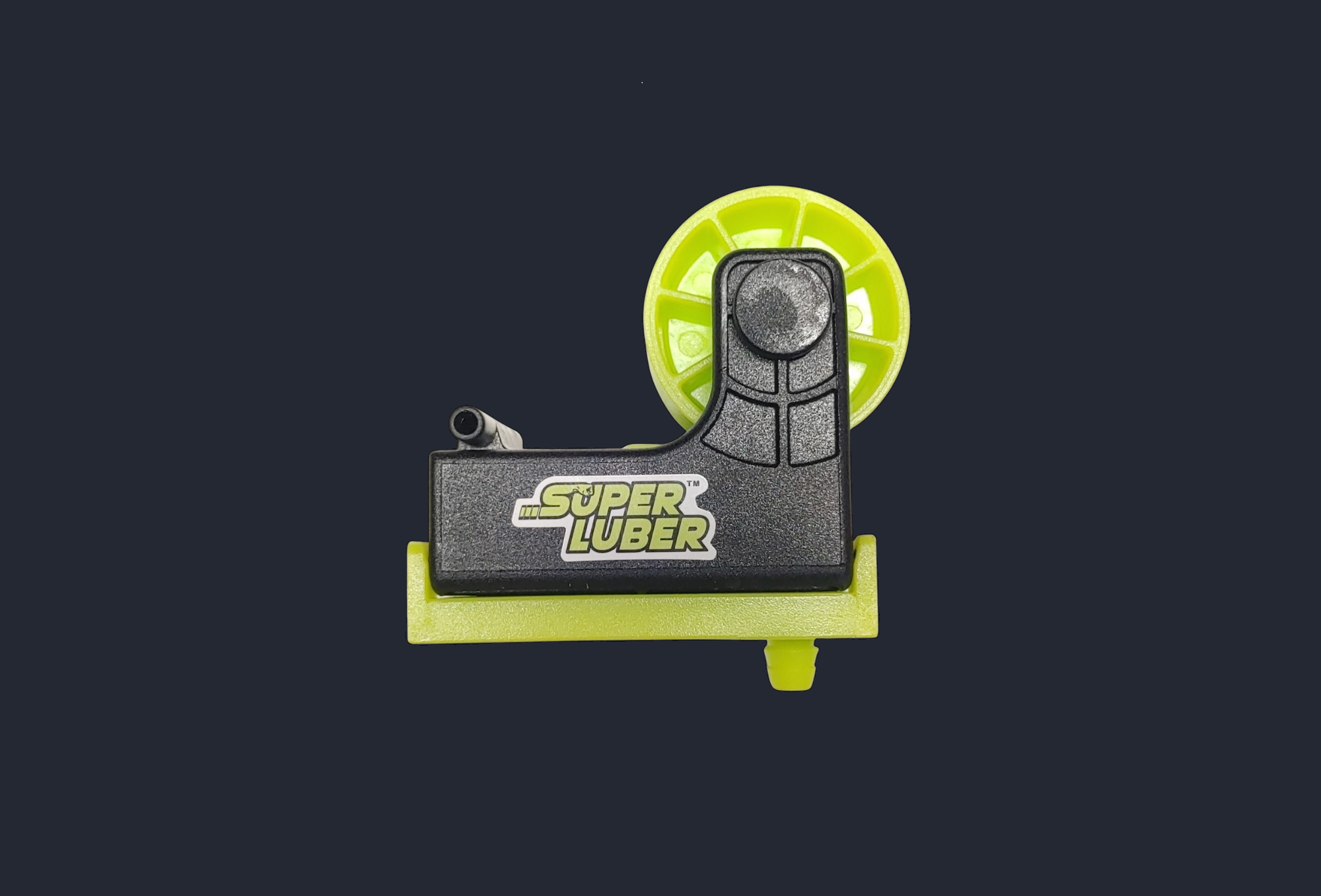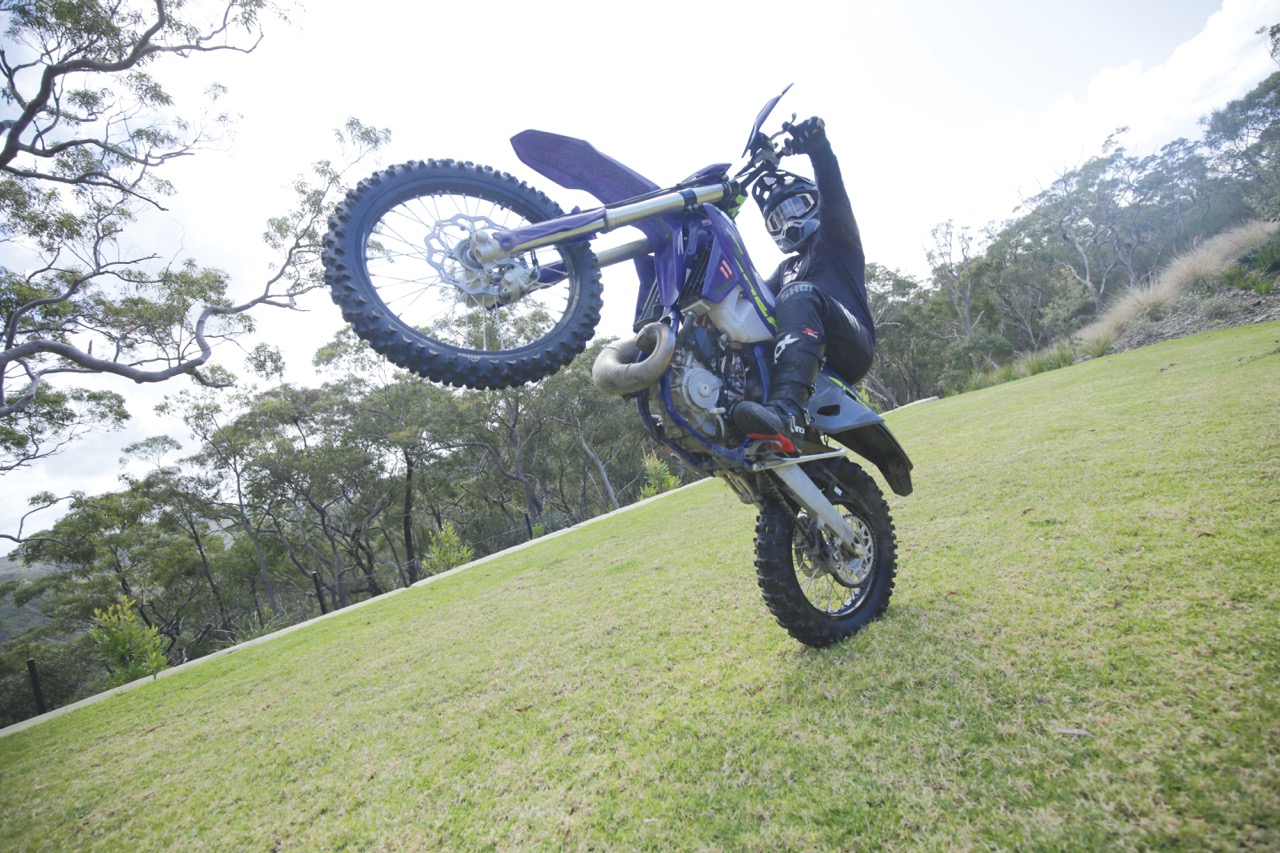Occasionally European motorcycle manufacturers like to do things slightly different than the Japanese manufacturers and in this case it is how the steering stem is tightened. The Euros use a pinch bolt in the top triple clamp but the Japanese use two separate nuts either side of the top triple clamp that lock into place. Here we will explain how to adjust the tension on a Euro steering stem.
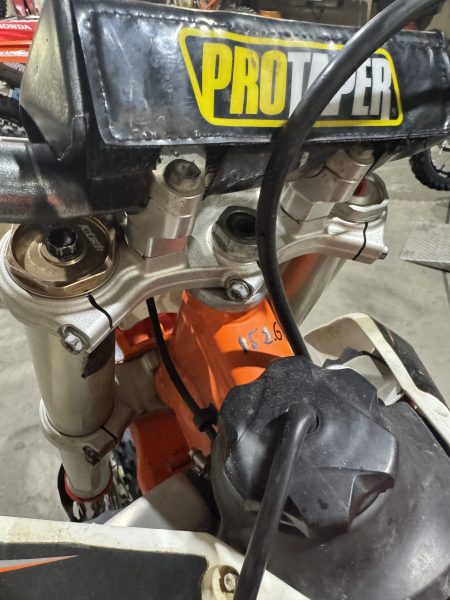
#1 STAND ’ER UP
Start by placing the motorcycle on a centrestand with the front wheel off the ground. It is easiest to feel the tension on the bearings with the wheel off the ground compared to with the wheel in contact with the ground.
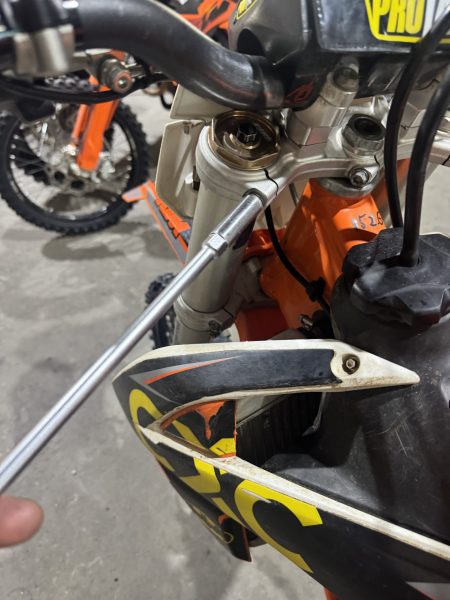
#2 LOOSEN UP
Now that the wheel is off the ground loosen all the fork pinch bolts. There will be two in the top triple clamp holding the right fork leg and another two holding the left fork leg. Do not loosen the triple clamp pinch bolts in the lower triple clamp or the fork legs may fall out on the ground.
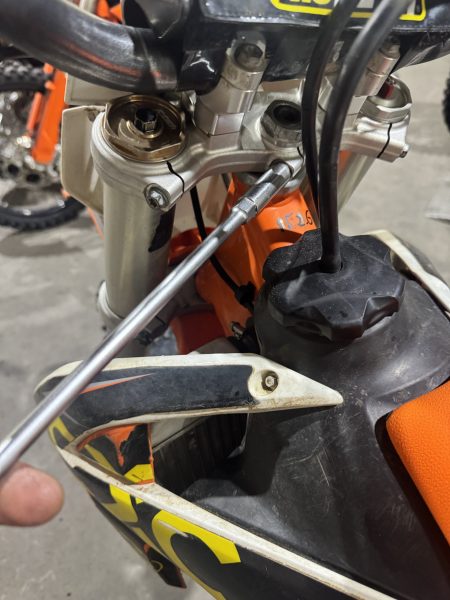
#3 LOOSEN SOME MORE
Now loosen the pinch bolt in the top triple clamp that clamps the steering stem. It is not necessary to remove any of these bolts, they only need to be loosened so they release their tension.
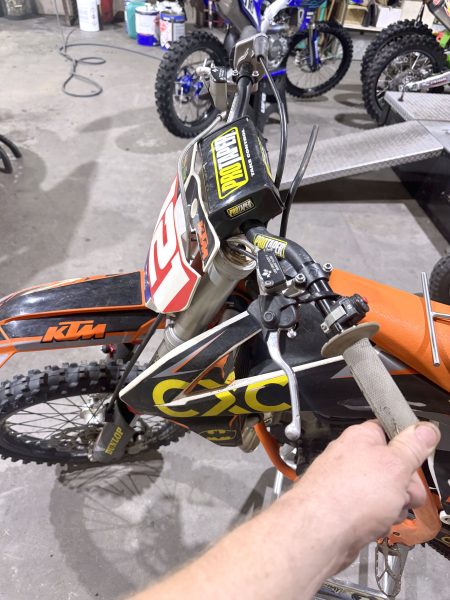
#4 TENSION THE NUT
Take your spanner and adjust the top nut on the top triple clamp that threads into the steering stem. If you want the steering to be tighter then add tension to the nut, if you want the steering to be looser then remove tension from the nut.
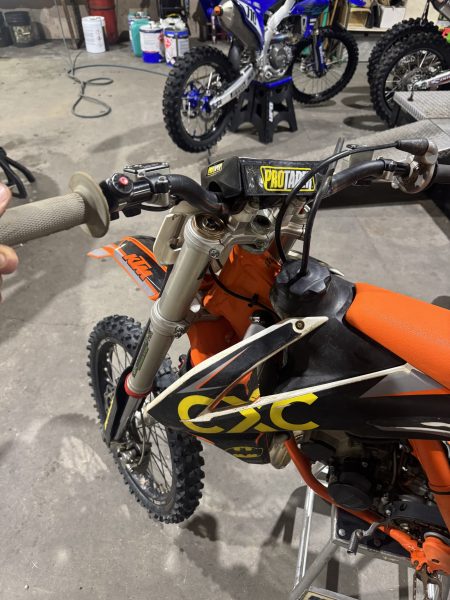
#5 PINCH IT UP
Once you have the desired tension set on the steering bearings, tighten the pinch bolt that clamps the steering stem to the manufacturers torque specifications. Each manufacturer can be different and some will even mark the torque setting on the triple clamp next to the nut and bolts.
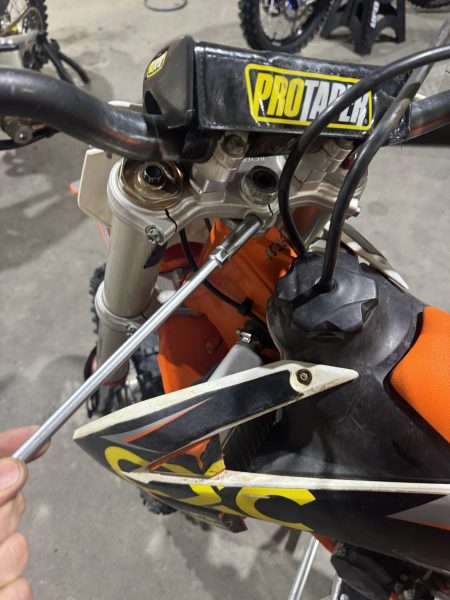
#6 TORQUE RIGHT
Then it is time to re-tension the fork pinch bolts. Be sure to tighten them to the manufacturers torque specifications as over tightening them can cause damage to the triple clamps and fork tubes.
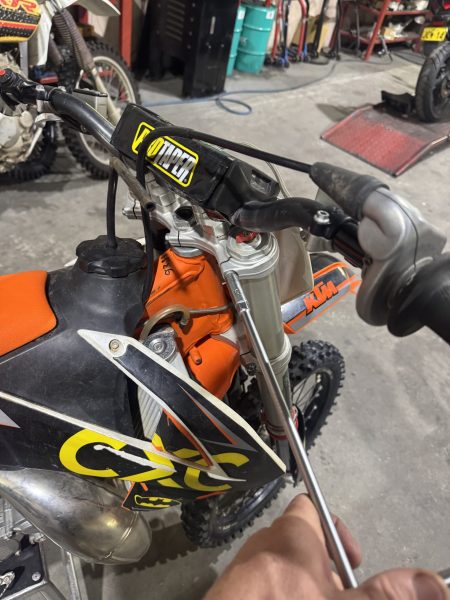
#7 FEEL IT
Before removing the bike from the centrestand, turn the handlebars each way to make sure nothing is binding and check for play in the bearings to make sure you haven’t set the tension on the steering bearings to loose.
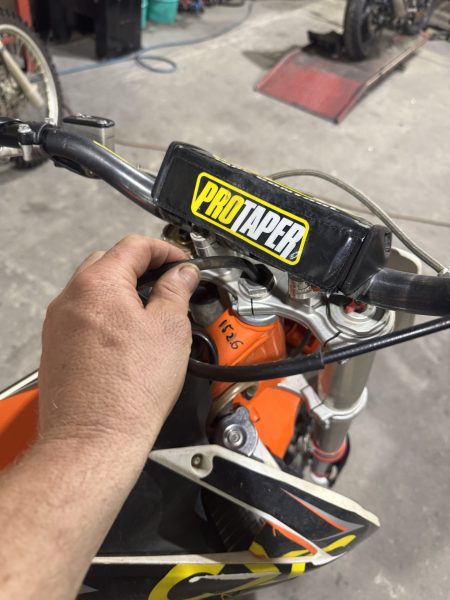
DOS
- Always follow the manufacturer’s torque settings.
- Check for any free play in the bearings before riding.
- Check the steering will turn full lock both ways before riding.
DON’TS
- Over tighten any bolts or nuts.
- Lock up the bearings so tight that you cannot steer.
- Loosen the steering nut so there is play in the bearings.
TOOLS
T-BARS, SPANNERS
WARNING
Worn steering bearings will feel tight and notchy and can lock up or seize at any time. Replace any worn or notchy bearings immediately.
LOOSE OR TIGHT?
A tighter steering stem will make the bike harder to ride at slow speeds as it takes more effort to balance and steer the bike around tight corners, but it will be more stable at higher speeds, especially in rough conditions.
A looser steering stem makes balancing at lower speeds easier, it also makes tight turns easier, but can lead to head shake and instability on rough terrain or at high speeds.

